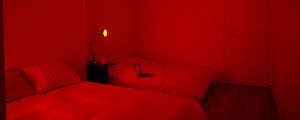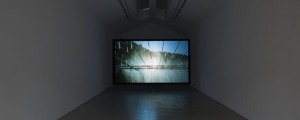The Industrial Prospective department of the Centre Pompidou is now hosting an exhibition at the espace 315. Featuring 15 projects specially made for the occasion, the exhibition has a somewhat opaque title: “Multiversités créatives“. According to the press release, multiversity expresses “the notion of creative universes that are both multiple and in transformation.” An exhibition which mainly focuses on the impact of new technologies in contemporary design… but it’s less about design itself and more about our ability as humans to create and represent our world using new technologies. From the different technologies presented in the exhibition, allow me to focus on my 2 favorite: 3D printing and Internet mapping, maybe (and surprisingly) two of the most buzzed-about these days…

Soon enough every home will be equipped with its own 3D printer. A technology that gets cheaper every day having dropped today to the 1K figure per printer. Neri Oxman, professor of Media Art and Sciences @ the MIT, thinks it’s a revolution as important as the creation of the printing press by Guttenberg. I’m willing to agree with her, especially when you see what she’s capable of producing. Inspired by The book of imaginary beings by Jorge Luis Borges, she has created 18 different pieces. She interprets the descriptions of the creatures found in the the book to make a “prototype”, a sculpture that can either be a part of a body or a garment, creating a “Mythology of the Not Yet”. The precision of the machine (able to work on a 16 microns scale) gives her creations an amazingly complex structure…. textures and patterns are inspired by nature that create utterly organic objects.
Markus Kayser is also using 3D printing, but has a completely different approach.. he uses the sun as an energy source and a machine enabler. In the middle of the desert, he directs a lens on a bucket of sand allowing the sunlight to turn it into glass. As in 3D printing, this low-tech machine works in layers and the objects slowly emerge from the sand. In this particular case a layered-bowl comes out while making you forget the technology that created it.
If this new revolution is all about the used matter the previous one, the Internet, is the complete opposite. Representing something as immaterial as the digital world is pretty much impossible. Thankgoodness we have Linkfluence for that, a company specialized in the visualization and mapping of the Internet.

The pingbacks, comments, and recurring mentions of certain terms found on-line give them enough information to create in this case a map of influence of the French Web. The thousands of websites and blogs are classified by interest and importance, forming a huge galaxy. Looking at the map gives you the same impression as if you were looking at the earth from afar. That’s exactly why this digital work is in the exhibition. By creating new objects, uses or technologies design keeps challenging and providing with a whole new perspective of the world we live in.



















